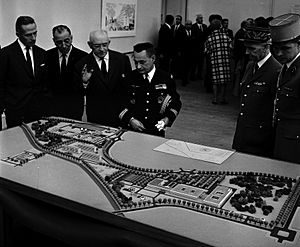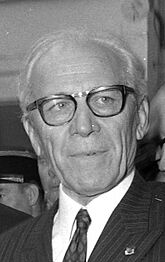Institut supérieur de l'aéronautique et de l'espace facts for kids
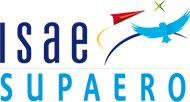 |
|
| Motto | Excellence with passion |
|---|---|
| Type | Grande école |
| Established | 1909 |
| Location | , |
The Institut Supérieur de l'Aéronautique et de l'Espace, often called ISAE-SUPAERO, is a famous engineering school in France. It was started in 1909. This makes it the world's very first school focused on aerospace engineering. Aerospace engineering is all about designing and building things that fly, like airplanes and spacecraft!
ISAE-SUPAERO is part of the University of Toulouse. It also works with many other important groups in the aerospace world. This school is known as one of the best engineering schools in Europe.
ISAE-SUPAERO was formed in 2007. Two older schools, SUPAERO and ENSICA, joined together. They did this to become even stronger and more well-known around the world. They wanted to share their teachers and special equipment. The school also offers extra training through a company called EUROSAE.
Since 2011, ISAE-SUPAERO has helped create a group called Groupe ISAE. Other important schools have joined this group. These include ENSMA, ESTACA, and École de l'air et de l'espace. The École de l'air et de l'espace trains officers for the French Air and Space Force. In 2018, ISAE-SUPMECA joined, and in 2022, the École nationale de l'aviation civile also became part of the group.
Since it began in 1909, ISAE-SUPAERO has had over 21,500 students graduate. Many of them became very famous! For example, Henri Coandă discovered the Coandă effect (how fluids stick to curved surfaces). Henri Ziegler was a key person in starting the Airbus airplane program. Frédéric d'Allest was the first head of Arianespace, a company that launches rockets. And Jean-François Clervoy is a well-known astronaut.
Contents
How ISAE-SUPAERO Works
ISAE-SUPAERO is a public school that focuses on science, culture, and professional training. It is overseen by the French Ministry of Defence. The school is approved to give out engineering degrees. It also offers national Doctorate and Master's degrees. These degrees are recognized by a group called la Conférence des Grandes Ecoles, which includes France's top schools.
The school is managed by a board of 27 members. They meet three times a year. There are also special boards for education, research, and continuing education. People from the school, other universities, and different industries are part of these boards.
A Look at the History of ISAE-SUPAERO
The Story of SUPAERO
The old logo of SUPAERO had an owl. The owl is a symbol of knowledge, linked to the Greek Goddess Athena. Even today, the owl is still part of the ISAE-SUPAERO logo!
In 1909, a smart officer named Colonel Jean-Baptiste Roche saw that the world would need many experts in aviation. So, he started a school in Paris called l'École Supérieure d'Aéronautique et de Constructions Mécaniques. This was the very beginning of ISAE-SUPAERO.
In 1930, the school's name changed to "l'Ecole Nationale Supérieure de l'Aéronautique." It was led by a French engineer named Albert Caquot. In 1972, it became l'Ecole Nationale Supérieure de l'Aeronautique et de l'Espace, or "SUPAERO" for short. In 1930, the school also moved to newer buildings in Paris.
In 1968, SUPAERO moved again, this time to Toulouse. Toulouse is a big center for aerospace. The school was now close to other important schools like l'Ecole Nationale de l'Aviation Civile (ENAC).
Many research labs were created with the school. Today, these labs work on important topics like how air moves around planes (aerodynamics), how to control systems automatically, and how to build advanced robots. They also study aerospace electronics, computer systems, and how engines work.
In 1975, SUPAERO was one of the first engineering schools in France allowed to give out doctoral degrees. This is the highest level of academic degree.
The Story of ENSICA
ENSICA was created in Paris after World War II. It was first called "École nationale des travaux aéronautiques" (ENTA). The first group of students had 25 people who became military engineers in aviation.
In 1957, the school's name changed to "l'École nationale d'ingénieurs des constructions aéronautiques" (ENICA). The program became three years long and focused more on industry. More civilian students joined.
In 1961, ENICA moved to Toulouse. Under its director, Émile Blouin, the school grew and became unique. It was no longer sharing space with SUPAERO in Paris. A new student center helped students feel more connected.
In 1969, the school joined a common exam for top engineering schools. In 1979, it received a special award called the Medal of Aeronautics. That same year, its name changed again to l'école nationale supérieure d'ingénieurs de constructions aéronautiques (ENSICA).
ISAE is Created in 2007
In 2007, SUPAERO and ENSICA joined together. They created one big school: l'Institut supérieur de l'aéronautique et de l'espace, or ISAE. This brought all their resources and facilities into one organization.
In 2015, the school officially took the name ISAE-SUPAERO. By the summer of 2015, all of the school's buildings and facilities were together on the Rangueil campus in Toulouse.
What Students Learn at ISAE-SUPAERO
ISAE-SUPAERO offers many different study programs:
- The main ISAE-SUPAERO engineering program.
- A special apprenticeship program with CNAM.
- An International Master's Program in Aerospace Engineering for students from all over the world.
- Six Research Master's Programs.
- Fifteen Advanced Master's Programs.
- Six Doctoral schools for students who want to do advanced research.
- Programs for people who want to continue their education.
Students who want to join the main engineering program take a very tough exam. This exam is used by many top engineering schools in France. Since 2015, all students in this program follow a new, shared engineering course.
ISAE-SUPAERO also trains engineers for the French military. It works with l'Ecole Polytechnique and ENSTA Bretagne to do this.
The school also offers continuing education through its company, EUROSAE.
How ISAE-SUPAERO Ranks and How Hard It Is to Get In
ISAE-SUPAERO is one of the most selective engineering schools in France. This means it's quite hard to get accepted! Less than 10% of applicants usually get in.
Most students who join the engineering program have spent at least two years studying very hard after high school. This preparation happens in special classes called classes préparatoires. About 20 students each year also come from universities. To get in, students take written exams in the spring and oral exams in the summer.
About 200 students from these special classes or French universities are accepted each year.
| Number of students accepted following the French national exam (2018) | |||||
|---|---|---|---|---|---|
| Classes préparatoires (Majors) | University | ||||
| Maths & Physics | Physics & Engineering Science | Physics & Chemistry | Physics & Technology | Technology & Industrial Science | / |
| 78 | 79 | 34 | 6 | 2 | 23 |
Here are the average acceptance rates for the national exam:
| Number of applicants | Average acceptance rates | |
|---|---|---|
| 2018 | 14 764 | 12.76% |
| 2017 | 14 686 | 11.63% |
| 2016 | 14 681 | 11.62% |
| 2015 | 14 193 | 11.86% |
| 2014 | 14 443 | 9.7% |
Famous People Who Went to ISAE-SUPAERO
Many amazing people have graduated from ISAE-SUPAERO. Here are some of them:
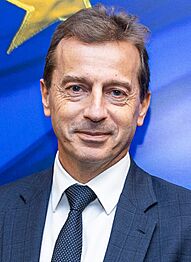
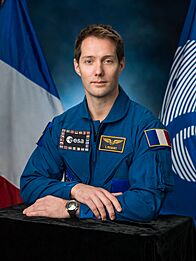
- Raoul Badin, who helped invent the airspeed indicator for planes.
- Henri Coandă, who discovered the Coandă Effect and designed an early jet plane.
- Henry Potez, who started the Potez airplanes company.
- Mikhail Gurevich, who helped found the famous MiG aircraft company.
- Marcel Bloch-Dassault, who started the Dassault airplanes company.
- René Couzinet, an aircraft designer who invented the retractable landing gear.
- Henri Ziegler, known as the "father" of the Airbus program.
- Jean-François Clervoy, a French astronaut.
- Guillaume Faury, the current CEO of Airbus.
- Thomas Pesquet, another famous French astronaut.
- Samantha Cristoforetti, an astronaut who studied at the school through an exchange program.
- Luca Parmitano, an astronaut.
See also
 In Spanish: Institut Supérieur de l'Aéronautique et de l'Espace para niños
In Spanish: Institut Supérieur de l'Aéronautique et de l'Espace para niños
- List of aerospace engineering schools


